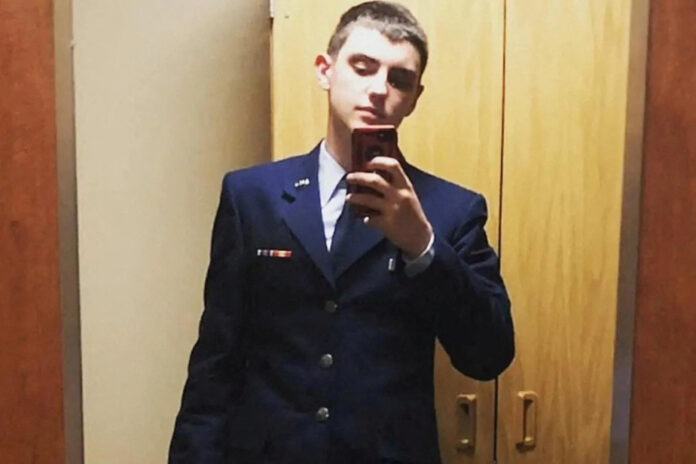(Boston) The young American serviceman charged with distributing a series of confidential American documents on the war in Ukraine had made “threats” on the internet and poses a danger if released, prosecutors said before a hearing on his detention scheduled for Thursday.
According to a court document released ahead of the hearing to support his continued detention, Jack Teixeira, 21, “regularly made comments about violence and killings” on social media.
“In November 2022, he said if it were up to him, he would ‘kill a ton of people’ to ‘kill the weak-minded’,” prosecutors write. They add that in February 2023, Jack Teixeira had also asked another Internet user for advice on the type of rifle that would be easier to use in the back of an SUV vehicle, referring to a mass shooting “in a urban or suburban crowd”.
Prosecutors also point out that the suspect had several weapons, some “within a few feet of his bed” and that the search of the homes of his mother and father revealed a “virtual arsenal”, including rifles and a bazooka.
In March 2018, while a high school student, he was suspended from school “because a classmate overheard him talking about weapons, including Molotov cocktails, firearms at school and racial threats,” prosecutors add. He justified this during an interrogation by evoking a discussion on video games.
According to American justice, Jack Teixeira, who faces 25 years in prison at this stage, poses a “serious risk of absconding”.
“He had access and may still have access to a body of classified information of great value to hostile nation states that may offer him sanctuary and attempt to facilitate his escape from the United States,” the court document further states. .
Hired in September 2019, with assignments as a computer and communications specialist, Jack Teixeira is suspected of having taken advantage of his position, and his “top secret” security clearance, to gain access to confidential documents and to have shared them then with a private group on the Discord social network.
These documents, some of which subsequently circulated on Twitter and Telegram among others, reveal in particular the concerns of American intelligence services about the viability of a Ukrainian counter-offensive against Russian forces.


















